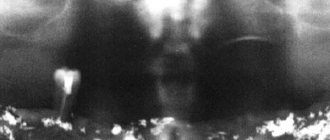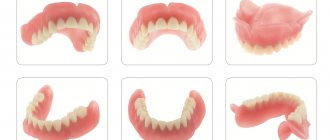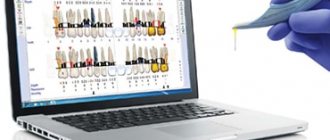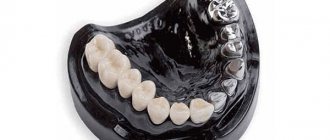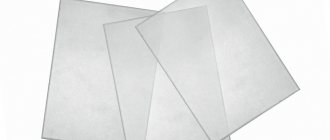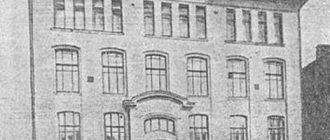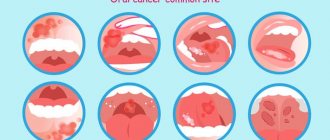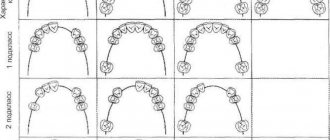Date of publication: 06/22/2012
Jaw bone atrophy is a progressive loss of bone tissue with a visible decrease in the height and width of the alveolar process of the jaw. Most often, bone atrophy develops after tooth loss, and this can also be facilitated by long-term inflammatory diseases of the oral cavity, anatomical features, age-related changes, congenital anomalies, various injuries of the maxillofacial area, tumor processes in the jaws, and general diseases.
Also, the jaw, deprived of load, decreases in size and hence the premature appearance of wrinkles and changes in the shape of the face. If one tooth is removed, the other teeth take on the load. As you know, nature abhors a vacuum. Neighboring teeth begin to shift towards the resulting defect. This leads to changes throughout the entire dentition. As a result, chewing function is impaired, resulting in bone tissue atrophy.
Two-stage implantation with delayed loading ROOTT - RUB 32,000.
One-stage implantation with immediate loading in 3 days - 44,000 rubles.
The price for complete restoration of teeth on 1 jaw in 3 days is 265,000 rubles.
Expert opinion
Emir Romanovich Omerelli
Maxillofacial surgeon, implantologist
Experience: more than 13 years
It has been proven that maximum atrophy of bone tissue occurs in the first year after tooth loss, and begins already three months after tooth loss, so you cannot delay dental prosthetics. The fact is that the lack of just one tooth in the jaw often causes quite serious problems. Each tooth performs its own function. The absence of even one tooth leads to disruption of chewing function, and can cause diseases or exacerbations of diseases of the digestive system, periodontitis, traumatic occlusion, displacement of the remaining teeth into free space, aesthetic defects, changes in speech, deterioration of the condition of the teeth, making subsequent prosthetics difficult.
Prosthetic options for a toothless jaw
One of the most common cases for prosthetics is a toothless jaw. What to do if there are no teeth? In dental language this is called complete edentia (complete absence of teeth). In such a situation, there are several options for prosthetics. Each of these options has its pros and cons, and therefore the patient’s task is to choose the most suitable prosthetic option, taking into account his financial capabilities.
Complete removable denture.
This is the cheapest prosthetic option. But as a result, it is the most inconvenient option. Why?
Over time, a person’s gums change their shape slightly under the load of the prosthesis (after all, the support for the prosthesis is the gums, there are simply no other supports), and the prosthesis begins to rub in some places and create discomfort. In this case, you need to come to the clinic where you made the prosthesis and have it adjusted. Each case is individual, but on average you will have to go to the dentist once every 3 months. The frequency depends on the characteristics of your gums and the quality of the prosthesis (so beware of making it in clinics where it is very cheap). But in most cases, patients who make a removable denture for the first time are disappointed. It is not possible to chew fully, the denture “rides” along the gums, you have to use special creams for dentures, and very often people simply stop wearing it and put it in the nightstand, wearing it on holidays at best.
Complete removable denture on orthopedic implants.
This is an inexpensive but very good prosthetic option compared to a conventional removable denture. The essence of its manufacture is as follows.
A conventional complete removable denture is made. Then special orthopedic implants with balls at the ends are installed. Depending on the condition of the bone, they can be installed 2 (installed only in the ridge, since there is no bone on the sides) or 4 (if there is bone left in the lateral sections). Special matrices are attached to the removable denture, and the denture is simply snapped onto the implants. Thus, the patient can easily remove and put on the prosthesis on his own if necessary. Even the option with two implants has a very significant advantage compared to a conventional removable denture. The design has almost no backlash, the load is distributed more evenly and the patient feels much more comfortable. But if it is possible to install 4 orthopedic implants, such a design will be almost monolithic, much more convenient and will serve you for many years. You won’t have to put your removable denture in the nightstand for a long time, you will use it constantly and the rest of your friends who suffer with removable dentures will envy you. The choice of a clinic for the manufacture of removable dentures on orthopedic implants must be done very carefully. In order for the prosthesis to fit tightly on orthopedic implants, the implants must be installed strictly parallel, otherwise the structure will have a large backlash.
Complete removable denture on standard implants.
This prosthetic option is more reliable compared to the “removable denture on orthopedic implants” option, but also more expensive.
In this case, there is no need to install the implants strictly parallel - the abutments (connecting parts between the implants and the prosthesis) are installed separately from the implants, and can be placed at an angle to the installed implants in order to maintain parallelism when installed in the prosthesis. With this option of prosthetics, there are certain recommendations - 4 implants must be installed in the lower jaw, and at least 6 implants are required for the upper jaw, because the lower bone of a person is more dense. Possible prosthetic options are on ball abutments (removable design) or screw fixation (conditionally removable design).
Complete removable denture on a beam on implants.
This prosthetic option differs from the one described above in that a titanium or CoCr arch is installed on the installed 4-6 implants (depending on the situation), and the teeth are already installed on it. This results in a removable design.
The difference is that the option of making a beam is more reliable, durable and comfortable due to the fact that when installing the beam, the load is distributed more evenly. Also, if necessary, you can remove or put on the prosthesis yourself.
Metal-ceramic or zirconium arc on implants.
This prosthetic option is similar to the option when installing a removable denture on implants, but in this case you do not get plastic teeth as in a removable denture, but full-fledged metal-ceramics or zirconium dioxide crowns.
This is a very aesthetic option; you will get teeth that will look better than those of a 30-year-old boy or girl. In this case, it is best to make a so-called conditionally removable structure - that is, the arch is attached to the implants with a screw fixation, and it can only be removed or put on in a dental clinic. The need to remove/put on an arch may occur once every 6-12 months, depending on how carefully you care for your oral cavity. This is necessary for hygiene around the installed implants, as well as for cleaning the prosthesis itself.
Full dental implantation.
This option is for the most picky and wealthy. This is the so-called permanent prosthetics option.
It is the most comfortable and completely restores both the functionality and aesthetics of teeth. It consists in the fact that a separate implant is installed in each (or almost every) place where the tooth stood. Prosthetics are possible either with individual crowns or with a full arch. Prosthetic options for a toothless jaw
Fixed prosthesis on 6 implants
| Name | Price |
| Complete removable denture with imported teeth | 24 000 |
| Reinforcement of a removable denture | 12 000 |
| Removable prosthesis on ball-shaped abutments with 4 support points (Osstem, Implantium, SuperLine) | 85 000 |
| Removable prosthesis with beam fixation on 4-6 points of support (Osstem, Implantium, SuperLine) | 190 000 |
| Removable prosthesis with beam fixation on 4-6 points of support (ASTRA, Straumann, Nobel) | 230 000 |
| Prosthesis with a metal base with screw fixation “all on 4” | 150 000 |
| Prosthesis with a metal base with screw fixation “all on 6” | 175 000 |
| Internal sleeve for screw-fixed prosthesis | from 5 000 |
| Multi-unit | from 12 000 |
| Removable denture on 4 Osstem MS implants | 90 000 |
Manifestations of bone atrophy
The patient himself, as a rule, does not notice the initial manifestations of jaw atrophy. He encounters this pathology only when the question of dental prosthetics arises.
Classification of jaw atrophy
The most widely used classifications are Schroeder for the upper edentulous jaw and Keller for the lower edentulous jaw. Schroeder distinguishes three types of upper edentulous jaw:
- The first type is characterized by a high alveolar process, which is evenly covered with a dense mucous membrane, well-defined puffs, a deep palate, and the absence or weakly defined palatine ridge (torus).
- The second type is distinguished by an average degree of atrophy of the alveolar process, mildly expressed tubercles, average depth of the palate, and a pronounced torus.
- The third type is the complete absence of the alveolar process, sharply reduced dimensions of the body of the upper jaw, poorly developed alveolar tubercles, a flat palate, and a wide torus. In terms of prosthetics, the first type of toothless upper jaws is most favorable.
Keller distinguishes four types of edentulous mandibles:
- The first type is a jaw with a clearly defined alveolar part, the transitional fold is located far from the alveolar ridge.
- The second type is a uniform, sharp atrophy of the alveolar part, the mobile mucous membrane is located almost at the level of the alveolar ridge.
- The third type - the alveolar part is well defined in the area of the anterior teeth and sharply atrophied in the chewing area.
- The fourth type - the alveolar part is sharply atrophied in the area of the anterior teeth and is well expressed in the chewing area.
With regard to dental prosthetics, the most favorable are the first and third types of toothless mandibles.
Modern techniques of bone grafting and plastic surgery create conditions for prosthetics and dental implantation in cases of existing bone tissue atrophy
Questions and answers
Is it possible to install a removable denture on implants if 5 teeth are missing in a row, and the outer one on one side is also missing.
How strong will it hold if the bone atrophies? Are they mobile when chewing? Life time? Will the diction change? Is it possible to install a removable denture on implants if 5 teeth are missing in a row, and the outer one on one side is also missing. How strong will it hold if the bone atrophies? Are they mobile when chewing? Life time? Will the diction change?
Hello! Theoretically, such prosthetics are possible, but the cost of such a design will not be much less than a fixed bridge on implants, while the service life is significantly shorter. The average service life of removable dentures is no more than 5 years; accordingly, every 3-5 years such a denture requires replacement, and even more often it may require adjustment. Removable dentures attached to implants are motionless during chewing; they are held quite securely. However, if you have bone tissue atrophy, it is necessary to conduct a diagnosis to understand whether installation of implants is possible in your case, and if so, what kind of implants can be used. Diction disorders can be observed, as a rule, in patients who require restoration of the front teeth or the entire dentition. An orthopedic doctor will tell you after an initial examination whether such an effect is possible in your case. The best option in terms of price-quality ratio when restoring several teeth in a row is basal dental implantation, in which a fixed prosthesis is installed already 3-4 days after implantation. In addition, this method is suitable for patients with bone atrophy. You can obtain more detailed information about the possibilities of implantation and prosthetics in your case from our doctors following a free consultation. You can make an appointment by calling + 7 (495) 789-42-02. Sincerely, Patient Support Center SIMPLADENT+ 7 (495) 789-42-02+8 800 333-53-41
3 years ago I had implants placed on my lower jaw and the remaining teeth were removed. And in March, all the implants were removed. The result is changes in bone tissue and flat gums. Is it possible to install a flexible prosthesis there? On top of my head there is a removable denture
3 years ago I had implants placed on my lower jaw and the remaining teeth were removed. And in March, all the implants were removed. The result is changes in bone tissue and flat gums. Is it possible to install a flexible prosthesis there? On top of my head there is a removable denture
Hello! Prosthetics with soft dentures in such cases is possible, but a preliminary examination of the oral cavity is necessary. Come visit us for a free consultation. Based on the results of the examination, our orthopedists will offer you the best options for dental prosthetics in your case. You can make an appointment by calling + 7 (495) 789-42-02. Sincerely, Patient Support Center SIMPLADENT++8 800 333-53-41
Other questions
Other jobs
Classification of alveolar ridge defects in dental implantology
Author: Patrick Palacci
Introduction
In 1985, Lekholm and Zarb presented a classification of jaws based on bone shape and quality that could be used for analysis when placing implants. They described five patterns of atrophy of the maxilla and mandible (Figure 6.1).
Figure 6.1 Classification of jaw shape and bone quality according to Lekholm and Zarb (1985).
- Most of the alveolar ridge or alveolar process is preserved.
- Moderate atrophy of the residual alveolar ridge or alveolar process.
- Progressive atrophy of the residual alveolar ridge (in fact, only the body of the jaw remains).
- Initial atrophy of the jaw body.
- Severe atrophy of the jaw body.
The authors also describe four types of jaw bone quality:
- Almost the entire jaw area is represented by homogeneous compact bone.
- A thick layer of cortical bone surrounds dense trabecular (spongy) bone.
- A thin layer of cortical bone surrounds dense trabecular (spongy) bone.
- A thin layer of cortical bone surrounds low-density trabecular (spongy) bone.
In addition to this classification, the thickness of the alveolar ridge mucosa should also be considered. The Lekholm and Zarb classification helps explain the relationship between the choice of surgical technique, bone quality, and jaw shape. This classification determines the position and number of implants to be placed and the need for additional surgical procedures to optimize the position of the implants.
For example, if, according to the classification, the defect is represented by group A, the implant can be installed in the required position without additional interventions, but installation in the optimal position in group D will require additional operations.
Regarding bone quality, given the classification, the surgeon should focus on achieving sufficient primary stability and avoiding overheating of the bone during site formation and implant placement. This is the reason why different site preparation protocols and the use of implants of different diameters are being considered.
According to Seibert, bone defects in the edentulous zone can be divided into 3 classes (Figure 6.2).
Figure 6.2 Classification of bone defects according to Seibert (1983).
- Class 1: loss of bone tissue in the vestibulo-oral direction (width) with preserved volume in the apical-coronal direction (height).
- Class 2: bone loss in the apical-coronal direction with preserved bone width.
- Class 3: combination of Class 1 and Class 2 (bone loss in height and width).
When planning surgery in the anterior maxilla, it is necessary to take into account the line of the upper lip (smile line), high or low, and the mobility of the upper lip. The height of the smile line, combined with the mobility of the upper lip, determines the need for additional surgical interventions to achieve an optimal result.
Implantation becomes more difficult with a high smile line and significant mobility of the upper lip.
The position of the implant, shape, color, soft tissue structure (presence or absence of interdental papilla) and the quality of the final restoration play an important role in achieving the final result.
The interdental papilla is a piece of soft tissue located between the coronal portions of two adjacent teeth (Figure 6.3). Contact between the crowns of adjacent teeth, interpr width
